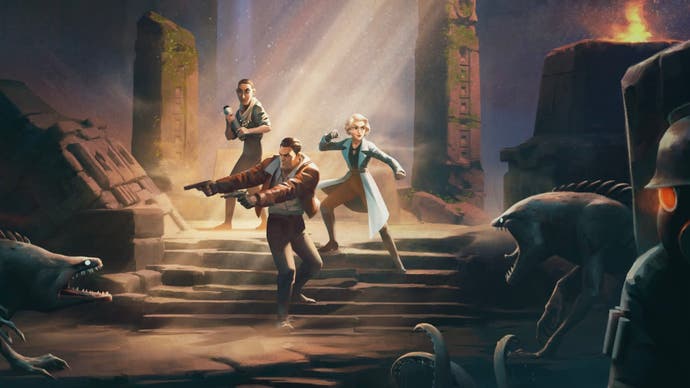The Lamplighters League review – rip-roaring tactical adventure let down by dreadful real-time stealth
Pulp friction.
I'll level with you: for a good long while I absolutely despised The Lamplighters League; approximately one half of it is clumsy, clunky, often deeply annoying, and dubiously conceived. For all that, though, I've become oddly quite fond of its weird mishmash of real-time stealth and heavily XCOM-inspired turn-based action, even if I'm not exactly sure it ever entirely rises above its litany of flaws.
But first, welcome to an alternate-history 1930s, where the suits are sharp, the dames are tough, and an occult-obsessed cabal is gathering an army to bring about the end of the world. It's a set-up that's pure 1930s pulp, The Lamplighters League's gorgeously evocative art style and sultry, swinging soundtrack perfectly capturing the globetrotting, rip-roaring spirit of the classic adventure genre in its heyday. There's a little bit of everything here – Edgar Rice Burroughs, H. Rider Haggard, Raymond Chandler, a big old chunk of H. P. Lovecraft, a wink to Indiana Jones – and The Lamplighters League doesn't miss a beat as its loveable cast of wisecracking rogues gleefully leaps between moonlit cobbled streets, vine-strangled temples, dank swamps, arid deserts, snowy highlands, and tropical island hideouts as it works to halt the apocalyptic designs of the Banished Court.
All this plays out across a world map perpetually plastered with missions, some of which are core to progressing The Lamplighters League's steadily mounting tale of occult mayhem, others a ceaseless procession of considerably less narratively engaging busywork, procedurally assembled from a randomised mix of pre-made maps, enemy placements, and objectives. Tackling the latter rewards valuable resources used to improve your field equipment and, more importantly, prevents their threat level from being added to three ever-looming doom tracks, each one representing the progress of the Court's three formidable Scions. Fail to keep doom under control and you'll be forced to deal with more challenging mission parameters once certain thresholds are met, culminating in a game-ending apocalypse. It's a system of high-pressure plate juggling that forces some tough decisions between missions and helps maintain tension throughout, but its endless whack-a-mole structure can also feel a little wearying when all you want is some breathing space to do the next core mission - even if the threat of dire consequences is never quite as punitive as the game would have you believe.
Missions themselves pull from a handful of basic objective types - locate a number of infernal caches, rescue a potential comrade, destroy a point of interest before its defences come online – which, truthfully, are never meaningfully distinct enough to significantly alter the fundamental flow of play. That does, unfortunately, mean your first big decision – picking the three, occasionally four, agents best suited to the task at hand (benched agents can be sent on non-playable expeditions to gather additional resources or unlock new special missions) – never really carries much weight, but that's far from The Lamplighters League' biggest flaw.
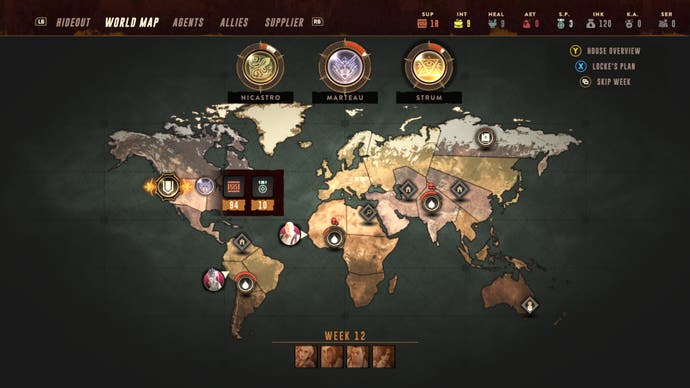
You see, The Lamplighters League splits its missions into two loosely interwoven halves: there's the decidedly XCOM-like turn-based combat and, between all that, real-time "infiltration", a stealth-focused system of freeform exploration that sounds neat on paper but is, in reality, clunky, counter-intuitive, half-baked, and often just plain broken.
As it's presented, The Lamplighters League seems to want you to use each agents' unique infiltration skills – shimmying up a vine, picking a lock, smashing through a wall, and so on – to orchestrate intricately planned assaults on each map, silently shuffling agents back and forth to open shortcuts and clear paths to avoid confrontation. The trouble is, levels simply aren't designed for the kind of clever tactical infiltration or sneaky stealth attacks the mechanics would seem to imply. Opportunities to use each agent's environmental abilities are, for instance, rare (in fact, they disappear so quickly after the tutorial, it almost feels like the idea was unceremoniously abandoned midway through development) and map design tends to lean toward barely branching corridors that shunt you from one mandatory skirmish to the next, rendering all this tiptoeing around practically moot.
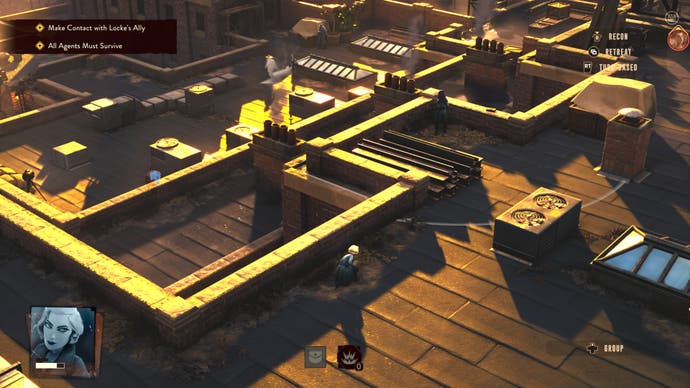
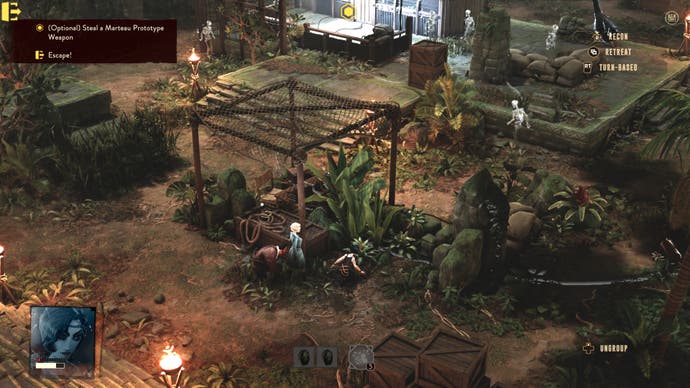
Mechanically, too, stealth is imprecise to the point of maddening – aggressive line-of-sight rules mean it's all too easy to stumble into invisible enemies with absurdly large, ultra-sensitive awareness cones, while dim-witted agent AI can undo your carefully made plans in a moment by, say, leaving half your party blithely standing around in the open when you were expecting them to join the leader in cover. It's aggravating enough that I was ready to write The Lamplighters League off based on its sloppy real-time stealth sequences alone, but if you approach them with a slightly different mindset – by which I mean ignore everything the game infers about how it wants you to play these segments, and ignore its weirdly under-utilised, under-developed infiltration mechanics – they are, at least, tolerable. Forget any ideas you might have about sophisticated tactical subterfuge and instead use these moments as a sort of quick preamble to combat – a brief opportunity to gain a positional advantage or to thin the ranks using each agent's considerably more useful offensive infiltration abilities (ranging from a sneaky back-of-the-head bonk to a sort of propulsive slam that fells groups of enemies like bowling pins) – and this wonky half of The Lamplighters League snaps more clearly into focus.
And, honestly, bashing through stealth feels like the right way to go; it creates a much pacier, more enjoyable rhythm to missions, not least because it gets you into The Lamplighters League's considerably more rewarding turn-based tactical combat so much sooner. This side of things is tighter, smarter, and far more strategically rich, primarily thanks to each agent's distinctive, complementary – and wonderfully characterful – combat skillset. Yes, the shadow of XCOM looms large here as you weigh up how best to spend your limited action points each turn – moving around the grid, dipping into cover, lining up attacks, preparing evasive manoeuvres, triggering overwatch – but once The Lamplighters League hits its stride, it slips into an enjoyably chaotic rhythm befitting of its ragtag team of fighters that feels very much its own.
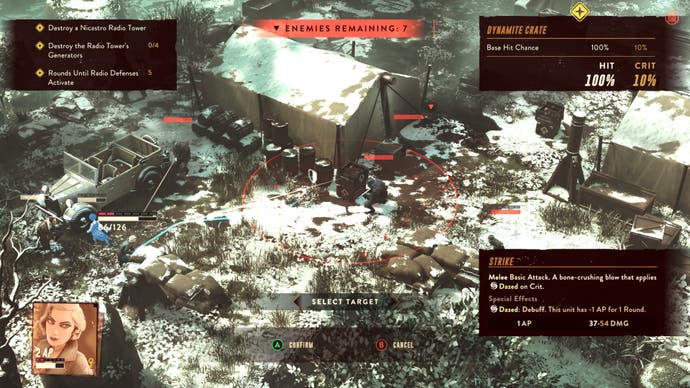
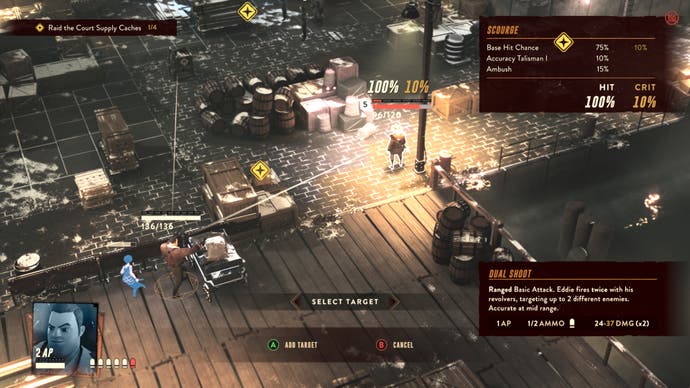
Your crew isn't a well-oiled fighting machine but an ad hoc assembly of disparate individuals, each with wildly different skills. Here, reckless sharpshooting brushes up against down-and-dirty fisticuffs and more, giving combat a wonderfully free-for-all vibe. War veteran-turned-bank robber Eddie, for instance, is all about ultra-aggressive long distance attacks with his twin pistols, running and gunning across the battlefield or picking off enemies with precise one-two shots; Ingrid, a femme fatale with a brutal uppercut, is a deliciously nimble bruiser aided by a powerful relocation move, meaning she can run into a skirmish, slap a few enemies around, then nip back out to safety, often getting a few extra swings in for free; Lateef is a master of distraction and deception with his handy multi-turn decoy, while occultist assassin Celestine is more about delayed gratification with her slow build-up poison and curse attacks. And each (there are more, but you get the idea) can further augment their abilities by spending skill points back at base, or arming themselves with the likes of smoke bombs, fire bombs, and grenades.
There's more too; The Lamplighters League has a small but satisfying line in environmental manipulation - exploding barrels, flammable oil slicks – and a stress system, affecting both your party and your opponents, that can be exploited in interesting ways. Sustained attacks and supernatural interference aren't great for your agents and you'll need to mitigate the stress they cause quickly to avoid losing control of your operatives during battle, but on the flip side, you can manipulate stress to push enemies over the edge too, turning them against their allies or breaking their spirit to halt tougher foes that might ordinarily shrug off physical attacks.
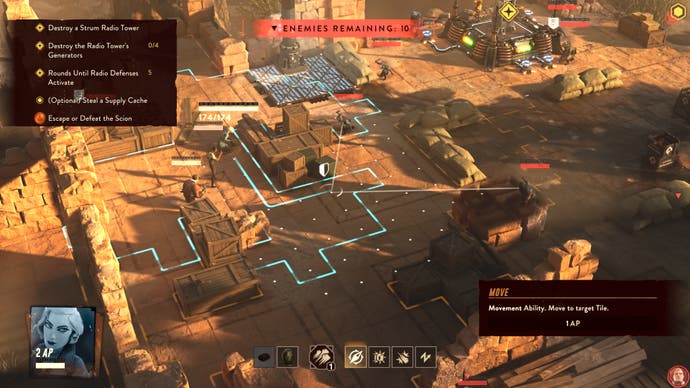
And speaking of enemies, once you've battled your way through The Lamplighters League's initially uninspiring roster of Banished Court grunts, newcomers start to fill considerably more interesting roles, bringing their own distinctive tactical challenges. You'll face-off against paranormally enhanced units able to summon allies to their side, as well as fire-spewing brutes that only go down when their malfunctioning flamethrower betrays them. Then there's the properly supernatural lot, which slowly come into play as The Lamplighters League starts shaking off its rather po-faced few opening hours: overwhelming swarms of listless spirits, shades that can teleport around the map, exploding mummies, two-legged shark beasts able to roar your agents off their feet, and on it goes. Not everything about turn-based combat is an unmitigated success – reinforcement towers that send in new enemies after a set number of turns are, for instance, a dreary nuisance rather than the tension builder I assume they're supposed to be – but The Lamplighters League is savvy enough in assembling its tactical toolkit, in providing sufficient interesting choices, that it's largely able to offset its dull, rote objectives.
All this and I haven't mentioned perhaps the game's most distinctive twist: the Undrawn Hand, a kind of sentient tarot deck that comes into play at the end of each mission, dishing out rewards and punishments – often both simultaneously – depending on your actions during play. Should an agent be downed in battle, for instance, they'll be served a negative trait from the mysterious deck, hobbling their abilities in some way or other for the next few missions, and even beneficial cards – dealt at the end of missions and manually assigned to individual character slots – come with their own downsides. It's a system that usefully fills two roles: adding another layer of unpredictability, another wrinkle to consider when formulating your strategic plans, but it also allows for a greater degree of agent customisation beyond the basic skill tree and upgrade system, often enabling some powerful synergies out on the battlefield as you mix and match the cards that float to the top of the deck.

To say I feel conflicted by The Lamplighters League, then, would be an understatement; when it works, it sings, conjuring a sublimely atmospheric, richly rewarding tactical adventure that embraces its pulpy inspiration in mechanically thematic ways. Bland maps and uninspiring mission objectives are a problem, especially given the campaign's incessant regurgitation of the same procedural components, but turn-based combat is robust enough, and its tactical choices interesting enough, that they're just about able to transcend the repetitive rhythms of play. It's just a shame the experience is hampered by a woefully underdeveloped, and often deeply infuriating real-time stealth element that's really only enjoyable – that's really only functional – if you try to ignore it as much as you possibly can. So the big question: are the good bits of The Lamplighters League good enough to sustain it through its missteps? Yes, I think so – I eventually started to enjoy myself quite a lot! – but it's a very close call.
